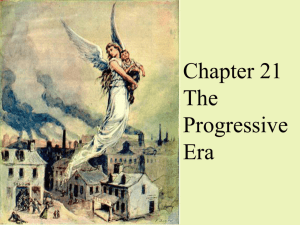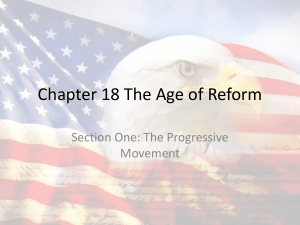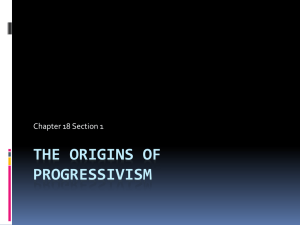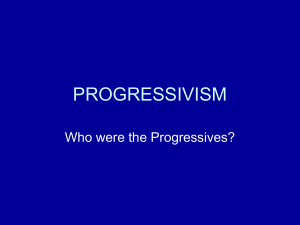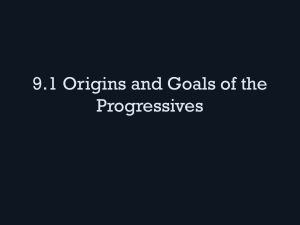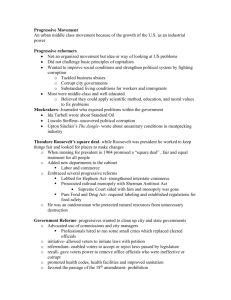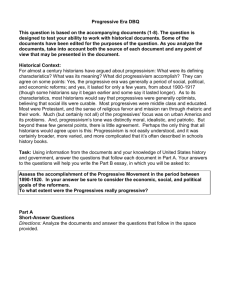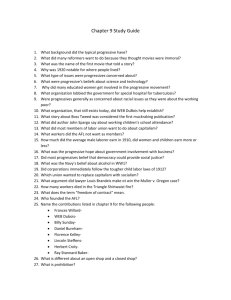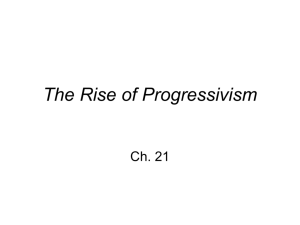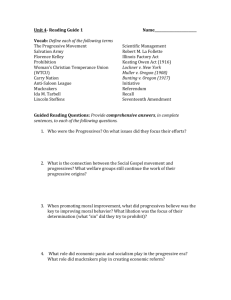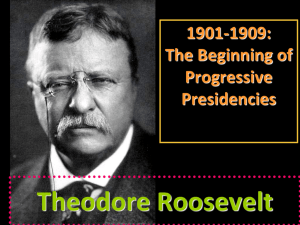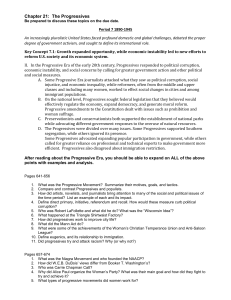The Progressives
advertisement
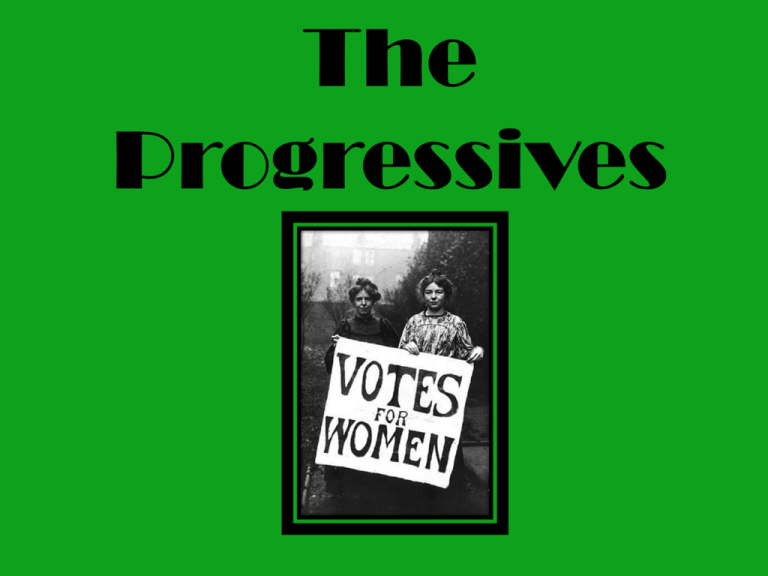
The Progressives What caused the Progressive Era? (1899 – 1920?) 1. Industrialization 2. Growing cities magnified problems of poverty, disease, crime, and corruption 3. Influx of immigrants and rise of new managerial class upset traditional class alignments 4. Massive depression (1893-1897) convinced many that equal opportunity was out of reach for many Americans. Who Were the Progressives? New middle class composed of young professionals who: 1. had strong faith in progress and the ability of educated people to overcome problems 2. were mainly urban in residence and orientation Who were the muckrakers? Journalists attacked corruption and scandal with a sense of moral outrage: 1. Lincoln Steffens exposed city machines in The Shame of the Cities (1904) 2. Ida Tarbell exposed Standard Oil Trust abuses 3. Upton Sinclair's The Jungle (1906) attacked the meat-packing industry What were the major areas of Progressivism? Education 1. Progressive education--John Dewey led movement that focused on personal growth, not mastery of body of knowledge, and believed in learning through experience. 2. Women began attending colleges in large numbers (by 1920, 47% of total enrollment was female). 3. Believing that more education would help bring an enlightened population, Progressives pushed enrollments to record levels (86% of children in schools by 1920) Settlement Houses Jane Addams and others established group homes in city slums to aid poor urban residents: 1. Promoted public health reform in cities, chlorinating water and tightening sanitary regulations 2. Developed education and craft programs for residents 3. Created neighborhood health clinics and dispensaries Women’s Rights: 1.Charlotte Perkins Gilman attacked the male monopoly on opportunity and declared that the cult of domesticity was an obsolete value for American women 2. Margaret Sanger led the movement to provide birth control to prevent unwanted pregnancies among poor women 3.Suffragists urged that women be given the franchise, which came on the national level with the 19th Amendment (1920). Temperance Anti-Saloon League and Women's Christian Temperance Union fought alcoholism on the state level through blue laws and on the national level with the 18th Amendment which prohibited the manufacture, sale, and transportation of liquor. Child labor laws Most states passed minimum working age laws and prohibited children from working more than 10 hours per day, but enforcement was difficult to achieve, and the Keating-Owens Labor Law was declared unconstitutional by the US Supreme Court in Hammer v. Dagenhart in 1918. Conservation During Teddy Roosevelt's presidency, 148 million acres were set aside as national forest lands and more than 80 million acres of mineral lands were withdrawn from public sale. Successes of the Progressives: 1. Trust busting (break up of monopolies) 2. Legislation gave federal and state governments the tools to protect consumers. 3. Progressives successfully challenged traditional institutions and approaches to domestic problems. 4. Amendments: 16, 17, 18, 19 The End of the Progressive Era: American entrance into the First World War is generally seen as the end of Progressivism. While Progressive presidents (TR, Taft, and Wilson) were concerned with the public good, they were not concerned with civil rights, and Jim Crow laws continued in the South.
